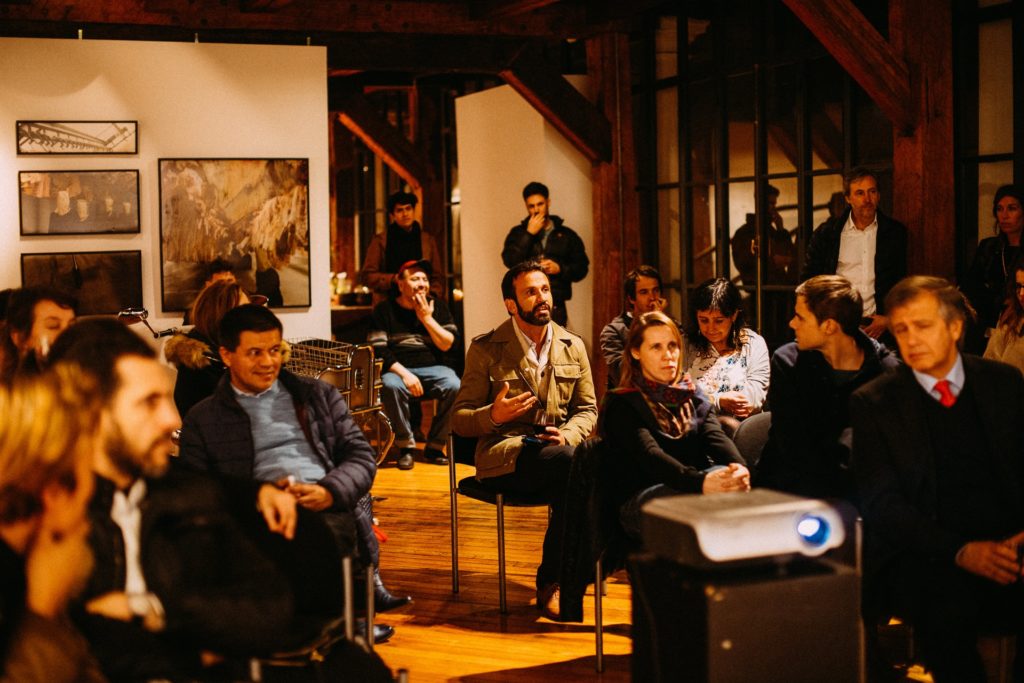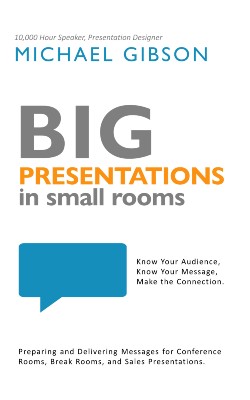Do questions make a difference? Can they help you make big presentations? If so, how do you choose which ones to use?
It starts with the Big Presentations mantra.
Know your audience. Know your message. Make the connection.
That is the challenge. Questions can help, but you must be careful with your choices. You should be determined to avoid bad questions.
So, let’s talk about asking good questions. How can you ask effective and well-received questions? What are the options?
The types of questions we should ask are determined by the audience. That’s why you must know your audience before you begin asking questions. Here are some things to keep in mind.
PRESENTATION QUESTIONS: A STORY
This topic brings back a memory from the mid-1990s when I was preaching at a church in El Dorado, Arkansas. That period of my life was filled with learning moments, many of which were painful and some of which were funny. This falls under the second category.
On this particular Sunday morning, I began my lesson with a question. In this church, sermons were one-way communications. Except for the occasional “Amen,” there was no response from the audience. Laughter was acceptable, but that was about it. And, in this tradition of churches, women did not speak during worship services–ever.

Well, most women did not speak. Grace did not fall into the category of most women. She was in her mid to late 70s and was totally comfortable with being herself and making herself at home.
I remember one Sunday when she became uncomfortable with her clothing and stepped back into the foyer which was separated from the auditorium by glass doors. She thought that being in the foyer offered her enough privacy to be able to remove her pantyhose. That was mostly true because the audience was facing the pulpit where I was standing facing– the foyer. That was Grace.
So, when I began my lesson with a question, Grace did not hesitate to shout out an answer. It was a little surprising, but I was able to carry on.
And here I must pause and say that I was way too reliant on my sermon scripts. If I had not been so tied to my script, I would have been thinking more and realized that I should probably not ask the next question that was in my notes.
But I did. I asked that next question and received another hearty reply. It was funny! And the audience, who was full of grace, laughed delightedly at her responses. They did not judge. They laughed with joy.
That is a heartwarming story of questions being asked to the wrong audience. And it turned out OK. But, quite often, inappropriate questions, do not turn out OK. They could offend or confuse or distract the audience members. This is not helpful to you.
Remember. Know your audience. Know your message. Make the connection. It’s all about connecting the audience to your message.
Going back to my experience in El Dorado, even though it was funny and heartwarming, it was very distracting. People did not walk away from that message remembering the content of the message. They remembered the graceful interaction with Grace. Which in hindsight was probably better. It was a powerful lesson in the importance of offering grace even when it might break tradition. But that was not my intended message. And that is the point. The question distracted from my message.
In your presentations, it is important to tailor the questions to the audience. To thoughtfully consider which questions will best connect the audience to the message. And it is important to ask questions that you are willing to hear the answers to.
Your questions should not create a perception of manipulation or condescension. Questions are open doors or at least they should be. So, if you open that door be prepared for whatever may walk through it. You might think it is opening a door for you to walk through but remember, that opening provides access both ways. Be prepared for that.
PRESENTATION QUESTION 1: RHETORICAL
Here are three types of questions to consider.
The questions I used in my lesson were rhetorical questions. Rhetorical questions function more like statements. No answer is expected. If there is an answer it will receive a lot of attention because it is breaking the social rules attached to a rhetorical question.
In US English-speaking culture, most people can recognize a rhetorical question and play by the rules associated with it. If you are presenting in a setting that includes multiple cultures, there may be people in the audience who do not know the rules surrounding a rhetorical question. They may feel a responsibility to answer that question. Or they may be like Grace and simply feel like answering the question.
Either way, it is good to be prepared for the possibility of an audience member answering a rhetorical question. This might mean that you want to avoid using such questions. And that’s OK. Rhetorical questions can be powerful, but they should be used wisely and be used with the knowledge that they just might receive an answer.

PRESENTATION QUESTION 2: CLOSED-ENDED
Another common type of question is the closed-ended question. This is a question that can be answered quickly and definitively-often with a single word. You could think of this as being a yes or no question. Closed-ended questions are often used for accountability or to directly guide a train of thought. For example, an authority figure may ask a subordinate, “Did you complete the task?” That is a closed-ended question. A persuasive presentation may include questions like:
Do we want to increase our sales?
Do we want to improve our customer service ratings?
Are we prepared to make the changes necessary to achieve these things?
Those are all closed questions designed to lead toward a specific decision. One concern with closed-ended questions is that they can come across as overly forceful or manipulative. They do not allow for explanations, caveats, or concerns. A closed-ended question opens a door for a moment and then shuts it very quickly after a response.
I remember when our kids were young during the hot days of summer in Fort Worth TX. They would be in and out of the house playing with their friends. I lost count of the number of times I said, “In or out and shut the door.” Closed questions are like that “yes or no and shut the door.” Give me a quick response and let’s move on.
PRESENTATION QUESTION 2: OPEN-ENDED
Open-ended questions are more like the way we use screen doors during fall and spring–when all the windows are open and the doors are open and the screen door keeps the bugs out, but people are welcome to come and go as they please. It is more of an open invitation.
While a closed-ended question shuts off discussion, an open-ended question invites it. Instead of asking, “Did you complete the task?” which is a closed-ended question, an open-ended approach would ask something like,
How did it go when you worked on that task?
What was the process of achieving that goal?
What problems came up as you worked on this task?
How did you overcome them?
During a presentation, an open-ended question might be something like,
What do you see as the pros and cons of this approach?
What are your biggest concerns with this idea?
What parts of this idea are most exciting to you?
What questions do you have regarding this idea?
These open-ended questions invite discussion and create more information that can then guide the decision.
PRESENTATION QUESTIONS: THE RULES
When we talked about rhetorical questions, we acknowledged the unwritten rules regarding those questions. The same is true of closed-ended questions and open-ended questions. Most audience members will understand the rules and play by those rules. Most.

There will however be people who do not understand the rules or do not respect those rules. So, you may have people who treat a closed-ended question as if it were an open-ended question and you may have people who treat an open-ended question as if it were a closed-ended question. Use wisdom when responding to these situations. if you become flustered or frustrated it will create the perception that you are not able to deal with conflict or deal with unexpected responses. Think ahead! Consider your audience. What might happen? What inappropriate responses could be given? How can you best respond to those?
I just asked a series of open-ended questions to help guide your preparations for these situations!
PRESENTATION QUESTIONS: 2 PLACES TO USE THEM
Since there are at least three types of questions, you have options. You also have options regarding where to place those questions. Here are two options.
PRESENTATION QUESTIONS: IN THE BEGINNING
Questions can capture attention at the beginning of a presentation. Know your audience, and this knowledge will help you compose a captivating question. You might be able to ask a question that invites them to think about an issue from a different perspective. Or to consider an option that was previously unknown to them. You might be able to ask a question about a statistic or a fact that would apply to them but could be unknown to them. Be sure that these questions connect your audience to your message.
Look back at the first paragraph of this article. Do you see how questions were used to create interest?

PRESENTATION QUESTIONS: AT THE END
Questions can invite action or further discussion at the end of a presentation. You can use a simple closed-ended question like,
Are we ready to do this?
When do you want to begin?
These invite action.
You could also use open-ended questions. Be careful If you are asking open-ended questions at the end of a presentation, it is important that you have time to answer those questions. If your presentation was supposed to last five minutes and you have 30 seconds left– asking open-ended questions is probably not a good idea. Instead, you should state your openness to further discussion. These conversations would happen after your presentation, either right after the meeting or at a scheduled time to follow. Be sure that your questions do not infringe on the time of other presenters or on the time of the meeting itself. It is much better to end early than to end late.
PRESENTATION QUESTIONS: CAN YOU USE THEM?
What do you think?
Can you use questions in your presentation?
What things do you need to keep in mind as you use them?
See what I did there? All three types of questions were used at the end of the presentation to guide your thinking and build investment. I love this!
You can do it. You can use questions. And you can do so in ways that prove that you know your audience, you know your message, and you are determined to make a connection.

Use questions wisely and you will be well on your way to making Big Presentations in Small Rooms!
Want to know more? Keep reading the blog!
Do you prefer to listen? Check out The Big Presentations Podcast!
Want to know even more? Order the book Big Presentations in Small Rooms!




